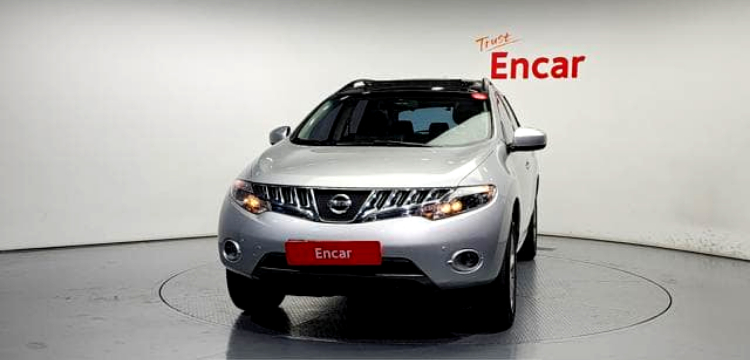Your cart is currently empty!

10 Common Nissan Murano Problems (And How To Fix Them)
Are you experiencing Nissan Murano problems? Well, you’re not alone here. Some model years of the SUV face mechanical and electrical issues. And these Nissan Murano issues can cause major headaches for owners. I had the privilege of driving the Nissan Murano in Blantyre city. A big thanks to Gregory for letting me review his 2009 Nissan Murano. I’ll tag him to this article.
The Nissan Murano is a midsize SUV known for its comfort and smooth ride. But, like many vehicles, it isn’t perfect. In this article, I’ll break down the common Nissan Murano problems. We’ll go into what to look for, what causes them, and how to fix them.
1. Rough Riding And Power Loss
Many Nissan Murano owners report rough or uneven idling, especially at stoplights or in traffic. The engine may feel like it’s struggling to stay on, and some drivers experience a sudden drop in power while accelerating. In more severe cases, black smoke may come from the exhaust. They may also be accompanied by a strong oily or burnt smell inside the cabin.
This issue is commonly caused by a faulty or clogged EGR (Exhaust Gas Recirculation) valve. When the EGR valve malfunctions, it can allow excessive exhaust gases to re-enter the engine. This can disrupt the air-fuel mixture and affect combustion. This leads to unstable engine behavior, poor throttle, and increased emissions.
To fix the problem, the EGR valve needs to be removed, cleaned, and reinstalled. Carbon buildup is usually the culprit, and a thorough cleaning can often restore normal function without replacing any parts. If cleaning doesn’t help, the valve may need replacement. It’s a relatively simple DIY job if you’re comfortable working on your car.
2. Engine Mount Failure
Owners of 2003–2015 Nissan Muranos frequently report a noticeable thumping or clunking noise while driving. You may also experience excessive vibration in the cabin. These symptoms usually become more pronounced during acceleration or when shifting from reverse to drive. Over time, the driving experience can feel rough and unstable, especially when the engine is under load.
The root cause is typically a worn or broken engine mount. Engine mounts hold the engine in place while dampening vibrations. However, exposure to fluid leaks or damage from minor collisions can weaken the rubber or hydraulic components in the mount. Also, improper installation during previous repairs can lead to premature failure.
Unfortunately, there’s no effective way to repair a damaged engine mount. The only fix is to replace it. If one mount has failed, it’s also a good idea to inspect the others. They tend to wear out around the same time. Replacing the mount restores stability and greatly reduces vibration.
ALSO, CHECK OUT: 10 Common Nissan Altima Problems (And How To Fix Them)
3. CVT Transmission/Gearbox Problems
One of the most frustrating Nissan Murano problems is the failure of the Continuously Variable Transmission (CVT). This gearbox issue is widespread with first-generation (2003–2007) and even some 2015+ models. Common symptoms include jerky acceleration and sudden surging while driving. You may also experience shuddering at low RPMs, delayed or rough gear engagement, and poor throttle response. In some cases, the vehicle may even lose power or struggle to accelerate, especially when climbing hills or overtaking. This issue is also common in some Nissan Altimas.
The symptoms of the Nissan Murano gearbox problems are usually caused by internal CVT wear and tear, overheating, or component failure. The Murano’s CVT system relies on a metal belt and pulley system rather than traditional gears. These gears can stretch or slip under stress. Heat buildup due to insufficient cooling or low-quality transmission fluid can accelerate this damage. Faulty valve bodies, defective pressure sensors, or worn stepper motors can also worsen performance over time.
To avoid complete transmission failure, it’s critical to catch and address these problems early. To maintain performance and cooling, I recommend regular CVT fluid changes using the recommended Nissan NS-2 or NS-3 fluid. If symptoms persist, a full diagnostic scan is necessary. In severe cases, you may need to replace the transmission or professionally rebuild the CVT unit.
4. Loud Bang When Driving Over Sharp Objects
Some owners of the 2002-2005 Nissan Murano reported hearing a sudden loud bang while driving over sharp objects like rocks or debris. Surprisingly, the noise isn’t followed by any visible damage to the tires or suspension.
The issue stems from a design oversight in early Murano models, which lacked a protective shield in front of the fuel tank. Front wheels can sometimes kick sharp or heavy objects, which can strike the exposed fuel tank area with force. This can produce a loud bang and potentially dent or damage the tank itself.
To fix this issue, install a proper fuel tank shield. These are now available as aftermarket parts specifically designed for early Murano models. The installation process is straightforward and can be done with basic tools.
ALSO, CHECK OUT: 8 Common Problems With The Nissan Pathfinder SUV
5. DPF (Diesel Particulate Filter) Warning Light
If you’re driving a diesel-powered Murano and the DPF warning light appears on the dashboard, it’s a sign that the Diesel Particulate Filter may be blocked. This is especially common for owners who mostly drive short city distances. This is because the engine doesn’t get hot enough to trigger automatic regeneration of the filter. Along with the warning light, you may experience sluggish acceleration or even poor fuel economy.
The blockage occurs because soot and unburned particles from the exhaust system collect in the DPF. When the car isn’t driven at higher speeds or for long enough durations, the system can’t reach the temperature required to burn off these particulates. This buildup chokes the exhaust flow. This can lead to reduced engine performance and eventually trigger the warning light.
To resolve the issue, you should remove and clean the DPF. You can do this using special DPF cleaning machines or chemical treatments. In some cases, a forced regeneration using diagnostic tools may work if the blockage isn’t severe.
6. Bad Seat Adjuster Assembly
Many Nissan Murano owners report that the driver’s seat begins to feel loose or wobbly over time. This issue is typically caused by a worn seat adjuster assembly. It is particularly common in vehicles where the seat is frequently moved forward or backward. The result is an uncomfortable and unstable seating position.
The root of the problem is often a weak or prematurely worn seat frame or adjuster track. As the components wear out, the seat starts to shift or rock slightly. This can be distracting, especially when accelerating, braking, or turning sharply.
The good news is that the seat adjuster doesn’t always need a full replacement. A skilled technician can reinforce or weld the affected areas of the seat frame to restore stability. If the damage is severe, replace the adjuster assembly with an upgraded or reinforced version.
ALSO< CHECK OUT: Common Problems With The Nissan Tiida C11 (And Solutions)
7. Steering and Suspension Concerns
Some of the most common Nissan Murano problems are steering and suspension issues. This problem is prevalent in models that have seen significant mileage or harsh road use. Common symptoms include a clunking or knocking noise when turning the steering wheel, increased vibrations while driving, or unusual tire wear patterns. These signs usually point to issues within the suspension or steering components.
Worn-out bushings, struts, ball joints, or even tie rods are often to blame. Over time, these parts degrade and lose their ability to cushion and stabilize the vehicle. Misaligned wheels can also contribute to poor steering response and premature tire wear. And when that happens, the car can feel unstable on the road.
To fix the issue, get a professional inspection. A mechanic can determine whether parts need replacement or whether a wheel alignment is necessary.
8. Poor EGR Valve
A faulty or dirty EGR (Exhaust Gas Recirculation) valve is another common problem reported by Nissan Murano owners. You’ll notice the problem in older diesel variants. The symptoms usually include rough idling, noticeable power loss. In some cases, you may notice black smoke coming from the exhaust or a strong, hot, oily smell. These signs can be concerning for drivers.
The EGR valve recirculates a portion of exhaust gases back into the engine cylinders to reduce emissions and lower combustion temperatures. However, over time, carbon deposits can build up inside the valve. The deposits can restrict airflow and cause it to malfunction.
Cleaning the EGR valve can often resolve the issue, especially if the buildup hasn’t caused permanent damage. If the valve is completely stuck or damaged, have it replaced.
ALSO, CHECK OUT: 2024 Nissan Qashqai e-Power Hybrid Lands in Australia
9. Brake Issues
The Nissan Murano has advanced safety technologies, such as the automatic emergency braking (AEB) system. This system detects potential collisions with vehicles, pedestrians, or obstacles and applies the brakes automatically if the driver fails to respond in time.
However, some Murano owners have reported issues where the AEB system falsely detects obstacles that aren’t there. This can cause the vehicle to brake suddenly and unnecessarily. This can lead to a potentially dangerous situation. These false positives are often due to sensor miscalibration or environmental factors.
If your Murano applies emergency braking when there’s no real threat, make sure to have a mechanic check the system. They can inspect and recalibrate the sensors or update the software if needed.
10. Timing Chain Rattle and Tapping Noise
Many Nissan Murano owners, especially those with models from 2009 to 2014, have reported hearing a persistent rattling or tapping noise from the engine. You’ll mostly notice this during cold starts or at idle. This is often caused by a worn timing chain or stretched chain tensioner.
Left unchecked, a loose timing chain can cause poor engine performance, misfires. If it jumps teeth on the camshaft or crankshaft sprockets, the loose timing chain can cause engine damage. The issue tends to develop gradually and may often trigger the check engine light.
To fix the problem, you may need to replace the timing chain, tensioner, and guides. While this is a labor-intensive repair, you should do it to avoid more expensive damage.
More Reported Nissan Murano Problems
While less common, there are some Nissan Murano problems reported by owners. Here are some more problems you may encounter:
- Air intake tube on air cleaner box may become loose – Reported by 36 owners
- The fuel damper may cause a ticking noise – 30 reports
- Liftgate rattles and fails to latch – 27 reports
- Erratic or high idle after cleaning throttle body – 24 reports
- The fuel filler compartment may become inaccessible – 22 reports
- Dirt buildup in front hub splines may cause noise under acceleration – 19 reports
- Fuel filler door actuator relay failure – 15 reports
- High fuel consumption, lack of power, or engine sputtering – 12 reports
- Navigation unit may display disc error – 9 reports
- Head gasket failure with repair complications – 4 reports
If you’re experiencing any of these Nissan Murano problems, a mechanic can help you diagnose and fix them.
Author Details

Our Team
Hi there! Welcome to Flagship Drive.
I’m Wilfred Nkhwazi, a passionate car lover from Africa. I created this platform to share expert insights, honest reviews, and a fresh perspective on the latest cars and automotive trends. Let’s hit the road together.
Advertisement

Recent News

